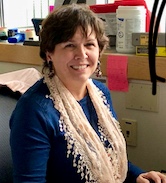Responsibility for this often falls to their adult children. When facing one’s own life stresses and needs while caring for aging parents, focusing on adequate nutrition can become less of a priority. The requirement for certain nutrients actually increases as one ages. However, overall food intake usually lessens over time. Therefore, attention to a few key nutrients can be important when helping aging parents shop for and prepare food.
1. Protein - With age comes a gradual loss of muscle mass and function, which can lessen the ability to perform activities of daily living such as eating, bathing, dressing, grooming, and leisure activities. Researchers have found that consuming adequate protein is a promising way to maintain muscle mass, in combination with physical activity. Meat, fish, and poultry are great sources, but not always easy to cook and chew for older adults. Other more manageable protein foods include nuts, legumes, eggs, cottage cheese, and Greek yogurt.
2. Fibre - helps maintain bowel regularity, which is important for all people but can be of particular concern for older adults. Small amounts of fibre throughout the day can add up. A general rule of thumb is to choose food items with a minimum 2-4 grams of fibre when shopping. High fibre cereals are an easy way to help meet fibre needs. Whole vegetables and fruit, legumes, nuts and seeds also provide good sources of fibre.
3. Fluid - maintains normal blood pressure, protects and cushions organs and joints, controls body temperature, and prevents urinary tract infections, among other roles. The thirst sensation can decrease with age; therefore, it is important to encourage older adults to drink regularly, even when not thirsty. Ensure drinks are available in the home. Purchase a water bottle and encourage filling and drinking from it every day. Offer sips of a beverage while out shopping, running errands, or simply spending time together.
4. Vitamin B12 - has a key role in brain and nervous system function, as well as in the formation of red blood cells. Good food sources of Vitamin B12 include meat, chicken, fish, and dairy products. However, up to 30% of adults over age 50 do not absorb Vitamin B12 well and therefore may require supplements. A simple blood test can be performed to check Vitamin B12 levels.
Weakened appetites and a loss of interest in food are common as one ages. Sometimes taste changes can also occur. At this stage, it may become more important to focus on improving intake of foods that are enjoyed rather than restricting foods that are high in salt, sugar, or fat, even when these foods have previously been restricted because of chronic diseases or conditions (diabetes, high blood pressure, high cholesterol, etc.). Long term care facilities call this a liberalized diet approach. It may be difficult to change you or your parents’ mindsets and disregard past food rules that were put in place, but it may help to improve energy and nutrient intake overall if you do. If you are unsure whether it is the right time to start thinking about this transition, talk to a health care provider such as a dietitian.
Lastly, consider other challenges older adults may be going through. Do their dentures fit well? Do they remember to check expiry dates and store food in a safe manner? Do they have enough food in their house that can easily be prepared? Keep in mind that older adults are often hesitant to bring up
issues or concerns and do not want to be a burden on their children. Though you may have a lot on your plate already, you can show your love by helping to keep their plate full, too.
Below is a recipe that will help your loved one fill up on fibre and protein.
Country Lentil Soup

From http://www.eatrightontario.ca/EatRightOntario/media/ERO_PDF/en/Seniors/A-guide-to-healthy-eating-for-older-adults-August-2015.pdf
Prep time: 25 minutes
Total time: 1 hour & 15 minutes
1 tbsp vegetable oil
1 cup diced onion
½ cup diced carrot
½ cup diced celery
4 cups vegetable or chicken broth
1 cup dried red lentils
¼ tsp dried thyme
½ cup chopped fresh parsley
Salt and pepper, to taste
1. In a large saucepan, heat oil over medium heat. Sauté onion, carrot and celery until softened, about 5
minutes. Add broth, lentils and thyme; bring to a boil. Reduce heat, cover and simmer for 20 minutes or until lentils are soft. Remove from heat.
2. Working in batches, transfer soup to blender. Purée on high speed until creamy. Add up to 1 cup (250 mL) water if purée is too thick. Season with salt and pepper to taste. Return to saucepan to reheat, if necessary.
3. Ladle into bowls and garnish with parsley.
Tips:
- Use sodium reduced broth to lower the sodium content.
- Substitute green or brown lentils for the red. Increase cooking time.
- Use canned beans instead of lentils.
Rinse well, to remove the salt.







